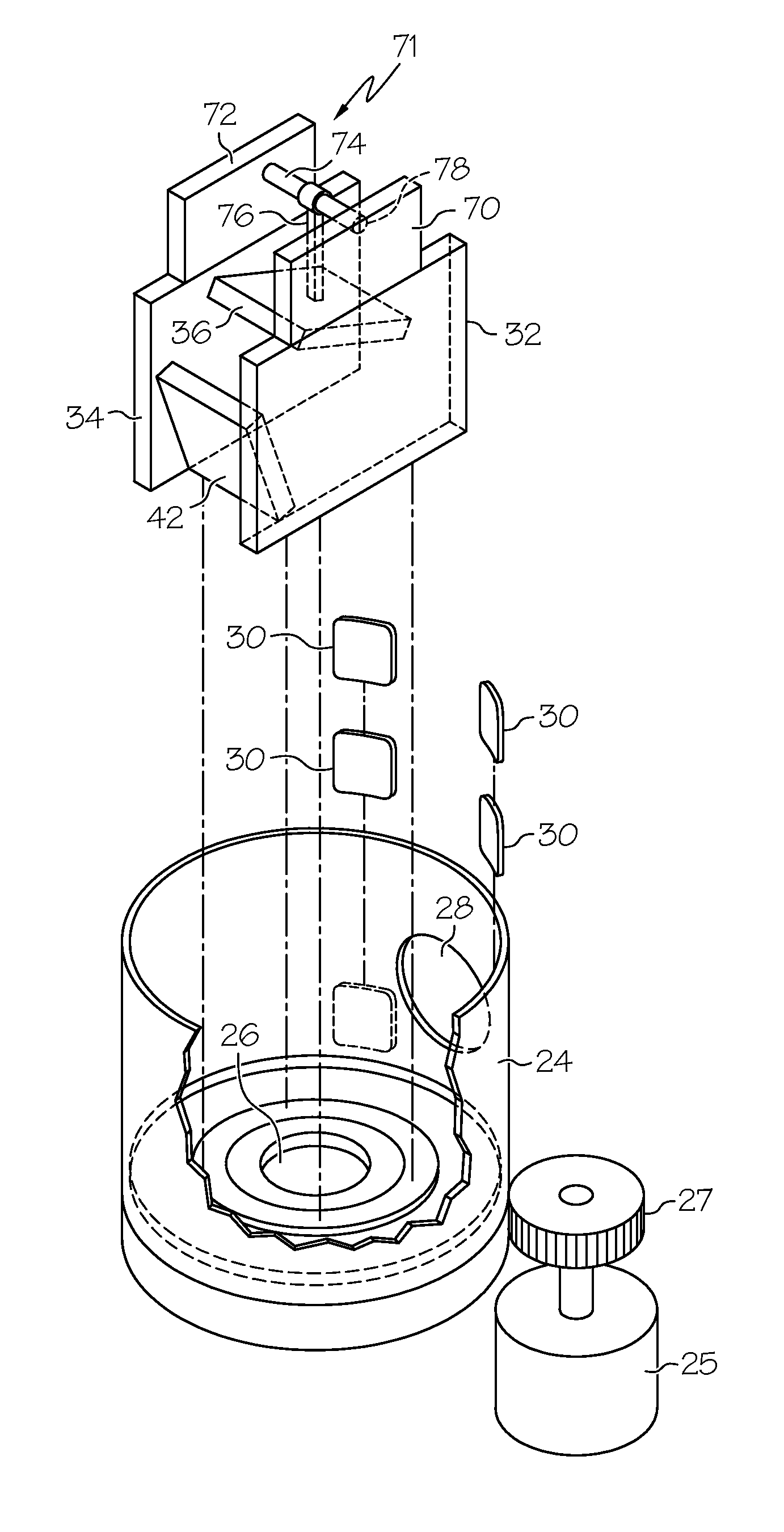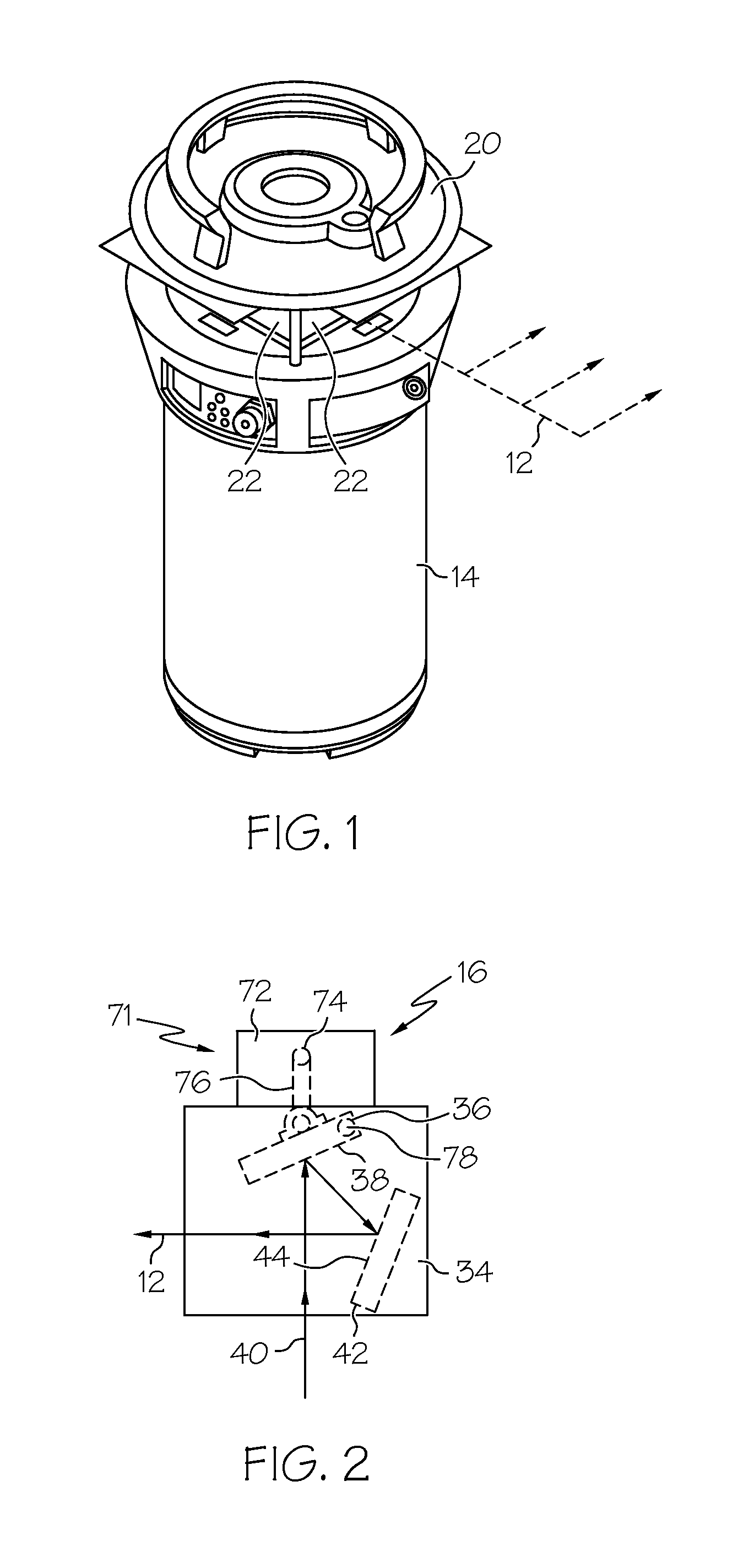Laser transmitter and method
a laser transmitter and receiver technology, applied in the field of laser transmitters, can solve the problems of difficulty in extracting complete position information from receiver signals, limited operation and flexibility of transmitters of this type, and none of these have proved to be entirely satisfactory
- Summary
- Abstract
- Description
- Claims
- Application Information
AI Technical Summary
Benefits of technology
Problems solved by technology
Method used
Image
Examples
first embodiment
[0033]FIGS. 1-3 of the drawings illustrate a laser transmitter for projecting laser light according to the present invention. The transmitter projects a beam 12 outward, spinning the beam around a generally vertical axis. The beam defines a varying conical surface that is raised and lowered. As will be described in detail below, the beam may be cyclically raised and lowered while it spins so that it defines a reference conical surface of varying inclination. The beam inclination may be cyclically varied according to a schedule, it may be randomly varied, or it may be varied as needed to keep a receiver illuminated. For example, the beam may be kept aimed in a fixed azimuthal direction, raised and lowered, or directed to a particular deviation angle, as desired. The light defining the reference conical surface may have a very limited range of movement such that it does not move through a horizontal or generally horizontal orientation in which it is generally flat. Alternatively, the ...
second embodiment
[0041]FIGS. 4A and 4B show a transmitter constructed according to the present invention. Arrays of small mirrors, termed micro mirrors, have been developed for a number of different applications. Micro mirror arrays have been incorporated in high definition television systems, and in optical multiplexing and optical switching systems. Various array constructions are known in the art. “Magnetostrictive Micro Mirrors for an Optical Switch Matrix,” Lee et al, published in Sensors, October 2007, pages 2174-2182, describes a magnetostrictive arrangement for mirror actuation, while “A Two-Axis Electrothermal Micro Mirror for Biomedical Imaging,” 2003 IEEE / LEOS International Conference on Optical MEMS, August 2003, pages 14-15, describes a thermal actuation arrangement for micro mirrors. U.S. Pat. No. 7,354,167, issued Apr. 8, 2008, incorporated herein by reference, discloses micro mirror arrays that focus, deflect, and scan light beams, in which the mirrors are moved electrostatically or ...
PUM
 Login to View More
Login to View More Abstract
Description
Claims
Application Information
 Login to View More
Login to View More - R&D
- Intellectual Property
- Life Sciences
- Materials
- Tech Scout
- Unparalleled Data Quality
- Higher Quality Content
- 60% Fewer Hallucinations
Browse by: Latest US Patents, China's latest patents, Technical Efficacy Thesaurus, Application Domain, Technology Topic, Popular Technical Reports.
© 2025 PatSnap. All rights reserved.Legal|Privacy policy|Modern Slavery Act Transparency Statement|Sitemap|About US| Contact US: help@patsnap.com



